A History of the Open Spaces Society
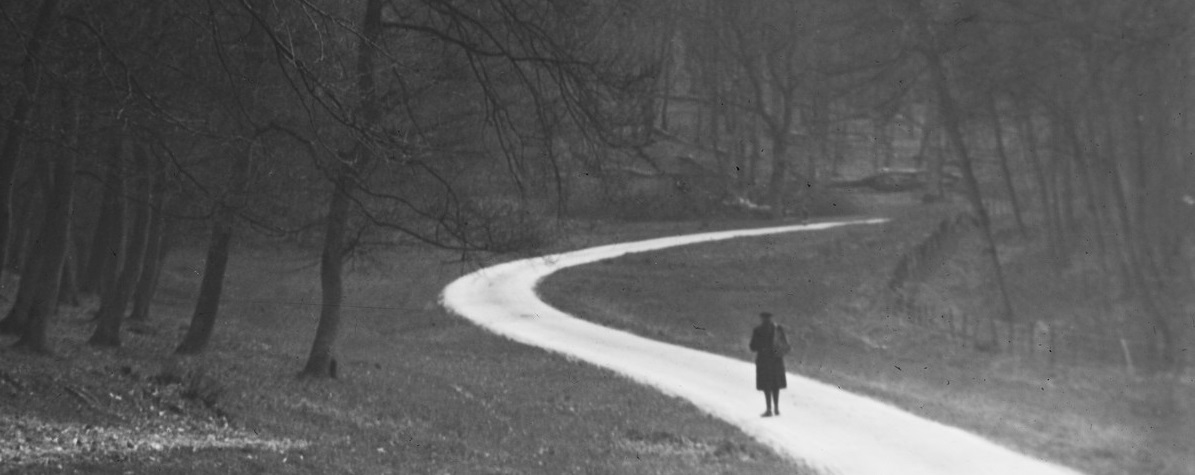
As Britain’s oldest national conservation body, the Open Spaces Society has defended open spaces in England and Wales since 1865. The organisation campaigns for public paths, open spaces, town and village greens, commons, and the rights of the public to enjoy them.
Featuring objects from our collections and oral histories, this exhibition explores the history of the Open Spaces Society and the invaluable work it continues to do today.

Who are the Open Spaces Society?
The Open Spaces Society was founded in 1865, initially as the Commons Preservation Society. This was expanded to ‘the Commons, Open Spaces and Footpaths Preservation Society’ before the current shortened title was adopted in 1982.
Today, the Society leads campaigns to preserve vital green spaces and advises many different organisations – from government departments and local authorities through to voluntary bodies and the general public – on the law and management of commons.
On the left, this 1911 news clipping from our archives demonstrates how open spaces have always mattered to our wellbeing.
MERL SR OSS P9/1
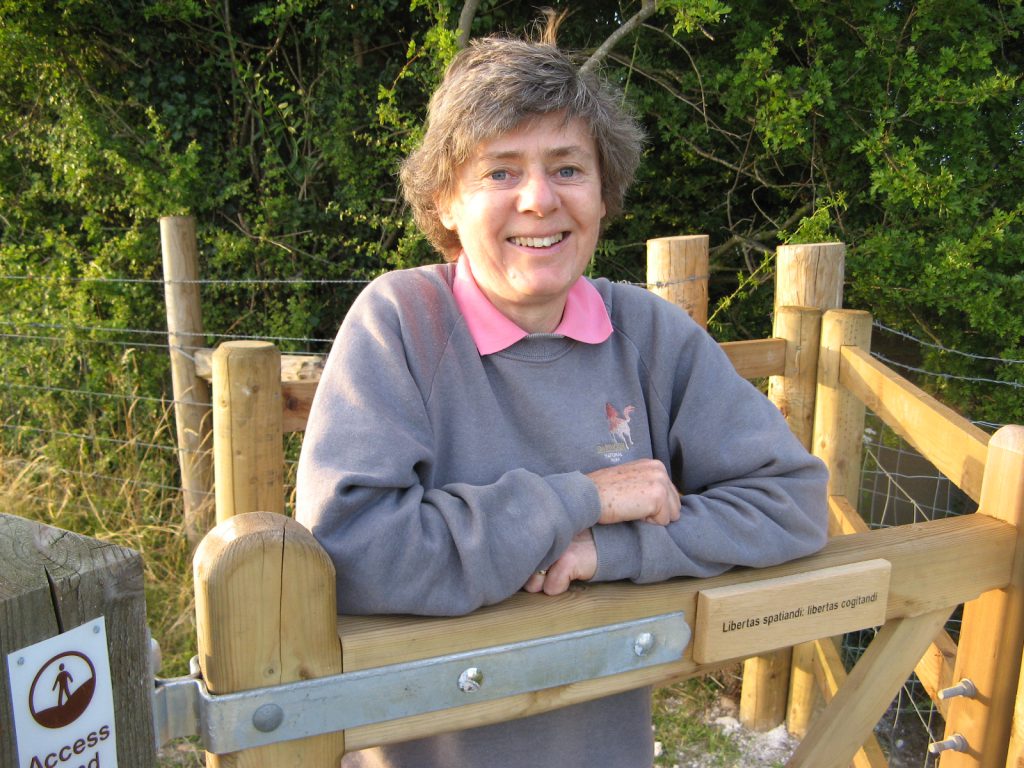
Kate Ashbrook
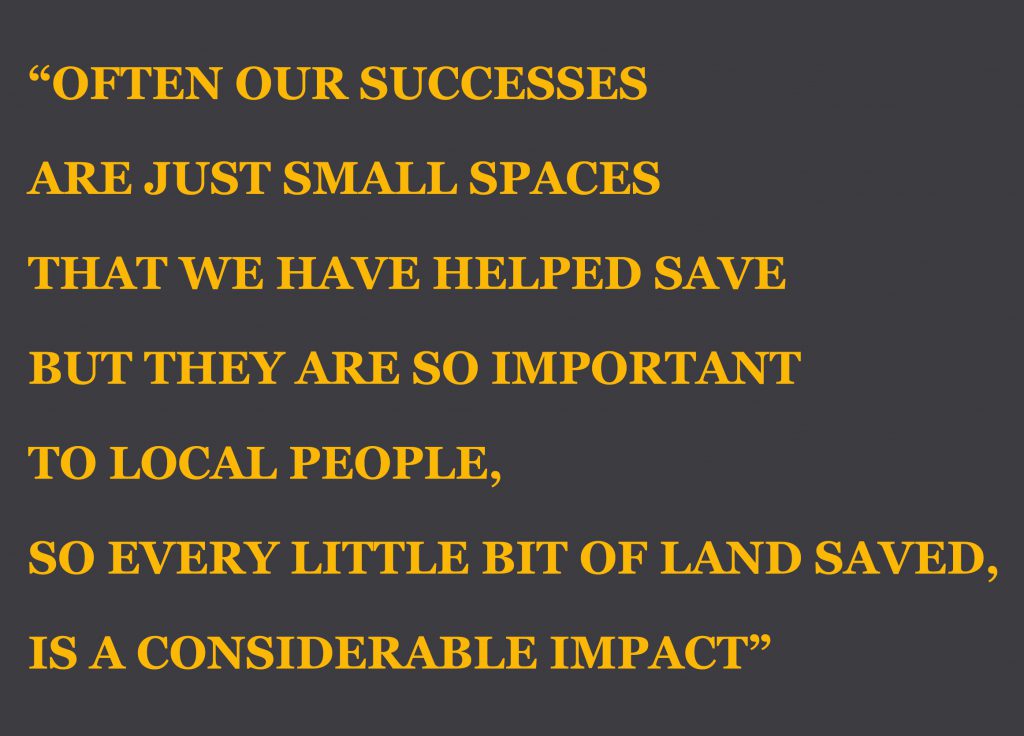
In this short clip, MERL archivist Helena Clarkson speaks with Kate Ashbrook, the Open Spaces Society’s General Secretary.
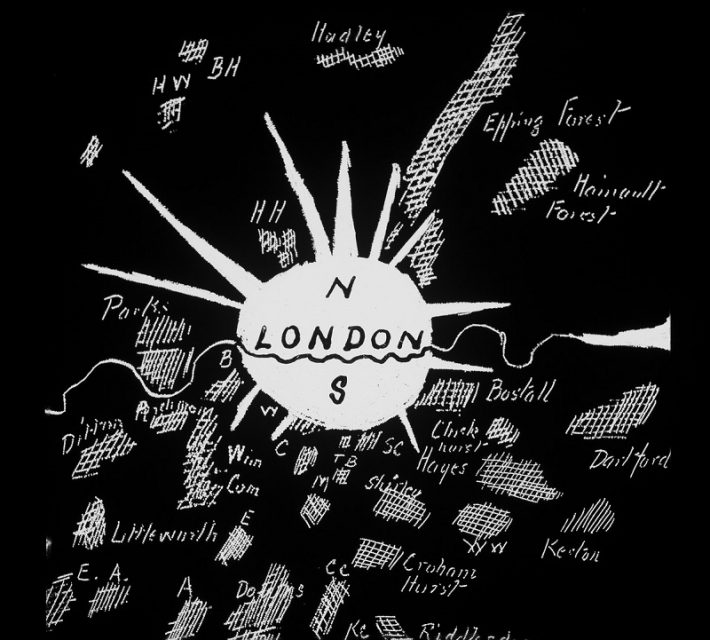
Landmark Cases
“The fault is great in man or woman
Who steals a goose from off a common
But what can plead that man’s excuse
Who steals a common from a goose”
– The Tickler Magazine (1 February 1821)
Under its earlier guise of ‘the Commons Preservation Society’, the Open Spaces Society’s work centred on rescuing commons in London and their surrounding areas. They involved fighting against the enclosure of the common land and protecting the rights of common people.
One of the Society’s early successes was at Hampstead Heath. Through their work, the common was saved from both enclosure and sand and gravel extraction, which would have greatly affected the space’s appearance and safety. Other examples include Wimbledon Common, Berkhamsted Common, and Epping Forest.
The poem above evinces this notion of the ‘stealing’ of commons. Once enclosed, commons were only available to landowners, denying the rights and access of the common right-holders and the public.
Sketch Diagram of London’s open spaces: MERL SR OSS PH5/C31

Our Common Right
Although common land is privately owned by individuals, it is subject to the rights of others: the commoners.
These rights include:
- Grazing: livestock such as cattle, sheep, horses, goats, geese or others.
- Pannage: grazing pigs on fallen acorns or beechmast.
- Estovers: collecting wood for fuel or repair and bracken for animal bedding.
- Turbary: cutting peat for fuel.
- Piscary: fishing.
- Common in the soil: taking sand, gravel, stone or minerals.
Common rights are the residue of much older rights which predate private ownership of the land. Today, there are 573,000 hectares of common land in England and Wales, where these rights still exist.
Photograph: Walton Heath common right, man carrying bracken. MERL SR OSS PH5/B144
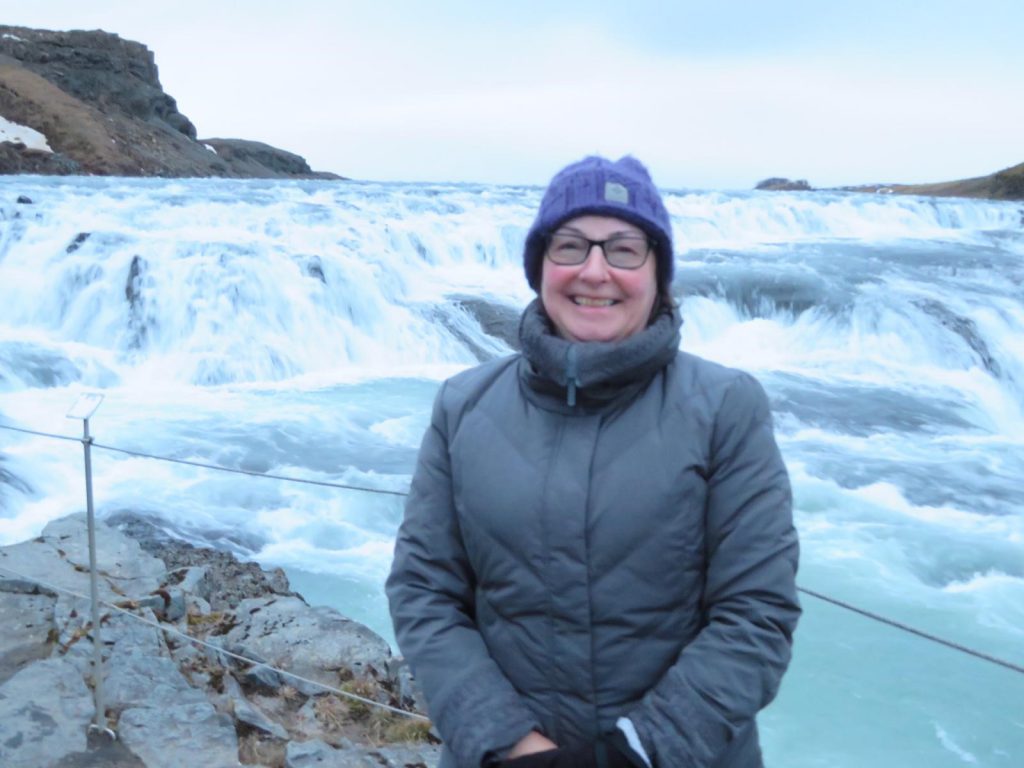
Nicola Hodgson
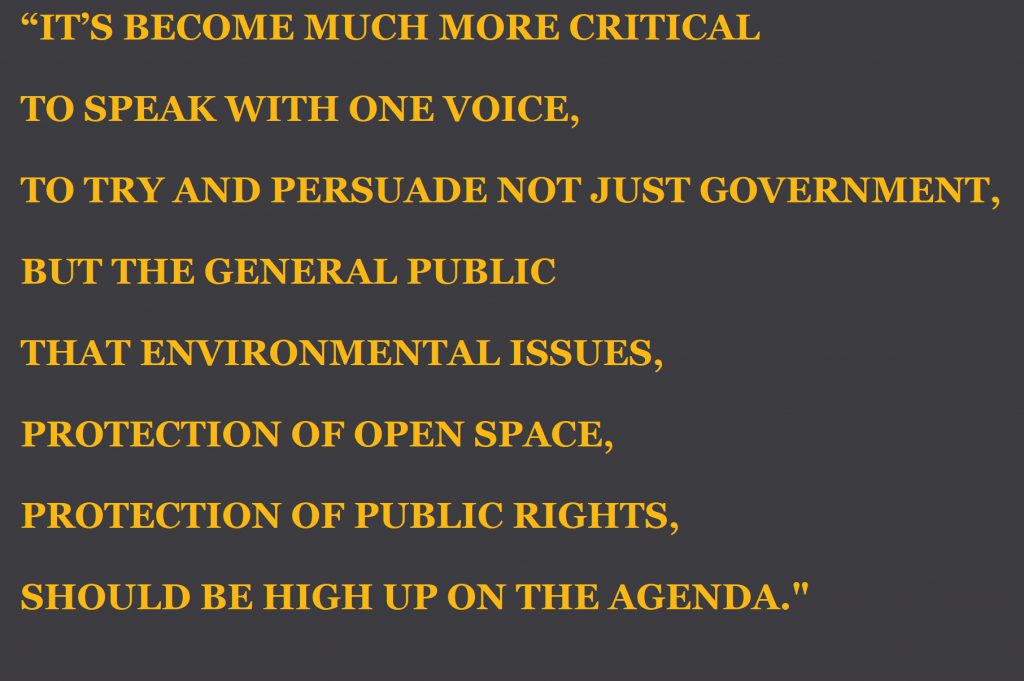
In this clip, MERL archive assistant, Felicity McWilliams speaks with Nicola Hodgson, a Case Officer with the Open Spaces Society, about the importance and legacy of the Society’s work.
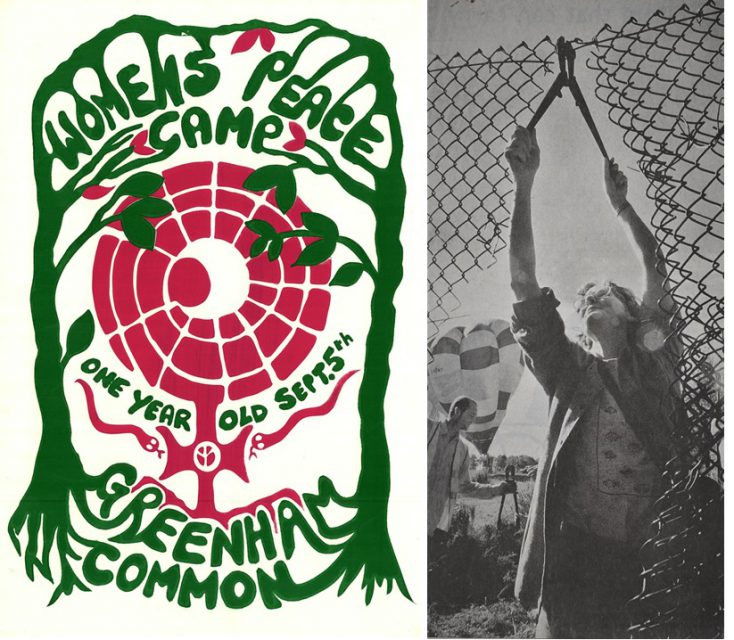
Greenham Common
One of the most interesting tales from the archive relates to Greenham Common.
Before the Second World War, both Greenham and Crookham Common were areas of heathland common, until they were requisitioned as an airbase by the Ministry of Defence. Greenham Common was made famous in the 1980s when women’s peace camp protests arose in opposition to the stationing of nuclear cruise missiles.
The Open Spaces Society were instrumental in achieving the Greenham and Crookham Commons Act 2002, restoring commoners’ rights (which had been overridden by the Ministry of Defence) and working to conserve the original commons.
The air base was deactivated in 1991 and the land was purchased by the local council in 1997. Hundreds of people united to tear down a section of the fence (pictured on the left), symbolising the return of the common back to the public after more than half a century.
For more information about the story of Greenham Common, explore our latest blog.
Women’s peace camp Poster: MERL 2010/62
Photograph (C) Ashley Coombes: MERL SR OSS CF/3/8
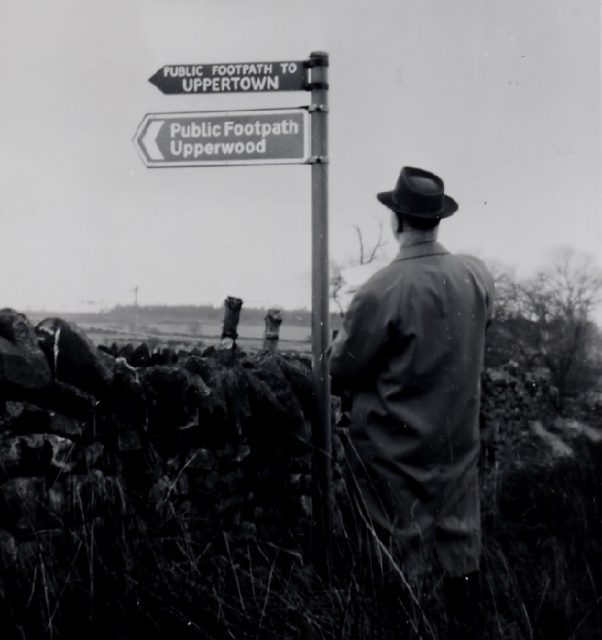
Way-marking and rights of way
The Open Spaces Society campaigns to reopen blocked, overgrown, and neglected paths to protect them from anti-public diversions, provide expert guidance on rights-of-way law, and advise on the actions required to save these spaces.
Photograph: MERL SR OSS ET3/45

Hugh Craddock

In this clip, MERL archive assistant Felicity McWilliams speaks with Hugh Craddock, a Case Officer for the Open Spaces Society, who shares his thoughts on the future of commons.
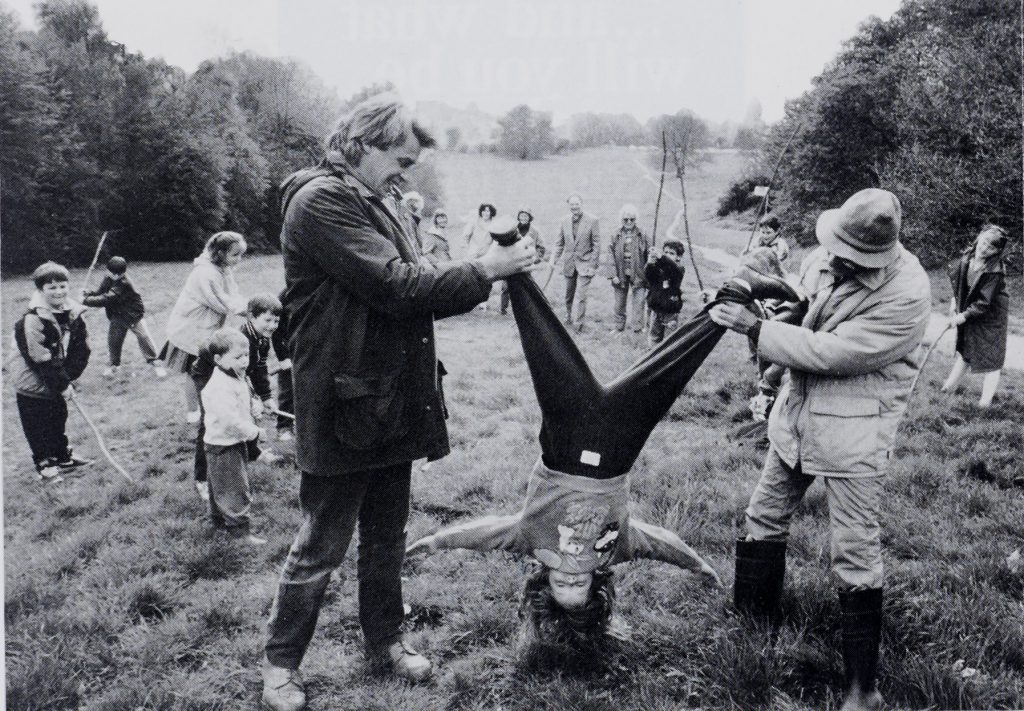
Beating the Bounds
In the early 1990s, the Open Spaces Society revived the centuries’ old tradition of ‘Rogationtide’.
Traditionally, on the fifth week after Easter, villagers would beat the parish bounds, carrying willow wands to tap boundary markers, and sometimes bump children’s heads on boundary stones, to imprint the boundaries into their memories.
Whilst boundaries today are largely outlined on maps, that doesn’t mean they are well-known, and poorly understood common boundaries are vulnerable to creeping encroachment and ultimately becoming permanently lost.
The image to the left depicts a ‘Beating the Bounds’ event, which the Open Spaces Society organised on commons across England and Wales, to remind local communities why these boundaries remain important today as part of our heritage.
‘Beating the Bounds’ photograph featured in the Open Spaces Marketing Material: Photograph (c) Drew Gardner

Dr Frances Kerner

Dr Frances Kerner is a Commons Re-registration Officer for the Open Spaces Society, whose work is funded by the Candy Bequest. In this interview, MERL archivist Ceri Lumley speaks with Dr Kerner about her work and her thoughts on the Society’s impact historically.

The Country Code
“Go carefully with respect,
Avoid all damage and neglect
When you exercise your rights in the countryside.
Show courtesy and regard,
For the country life is hard,
And peruse your enjoyment of it with pride”
– Edgar Powell (15 May 1980)
The Open Spaces Society helped promote the ‘Country Code’ (written by the Countryside Commission, which later became Natural England).
The above extract is taken from a poem named ‘Code Ode De O Do’, written by a volunteer working for the OSS.
The images to the left and below belong to a booklet produced by the Countryside Commission in the 1950s, kept in our archives.
MERL SR OSS ET3/22
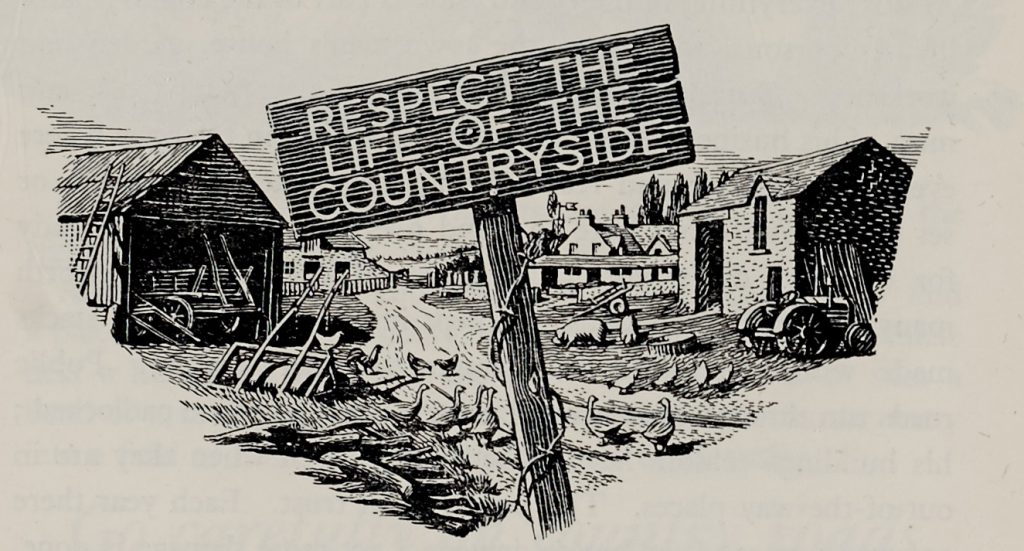
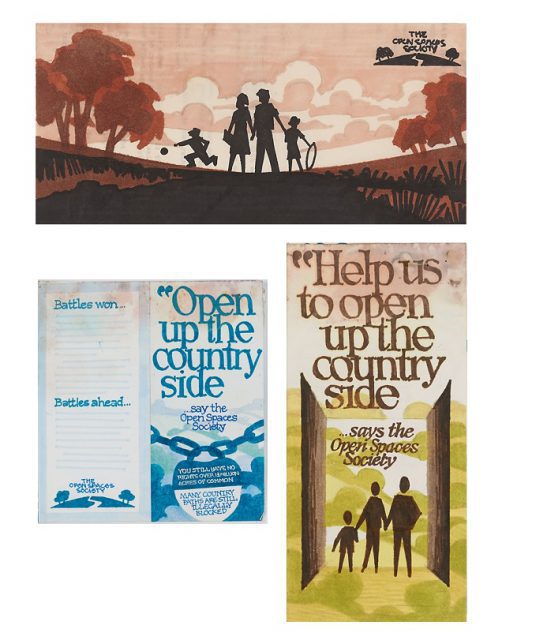
Promoting open spaces
The Open Spaces Society promoted its work historically through leaflets and now uses social media and web resources.
On the left are preliminary leaflet designs commissioned for the Open Spaces Society, created in the 80s and 90s. It depicts the colour and layout decisions that were made, as well as the intent: to encourage people to become members and support its work, and to volunteer as local correspondents dealing with local issues concerning commons, greens, open spaces and paths.
Today, you can find out more about volunteering for the open spaces by visiting www.oss.org.uk.
MERL SR OSS P7/2
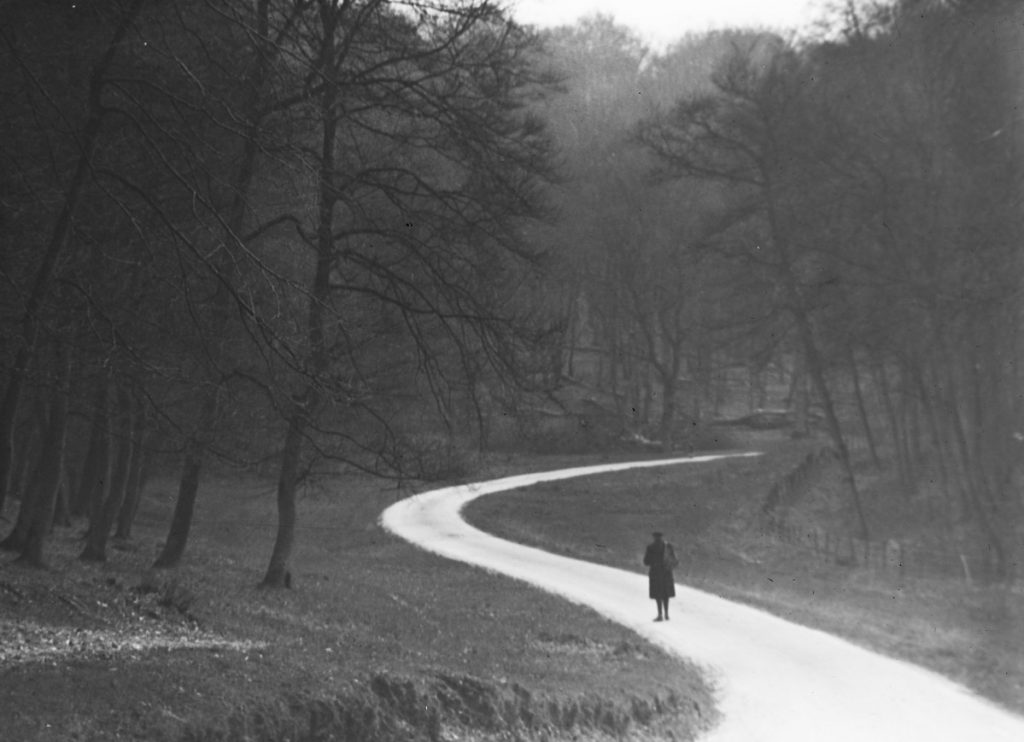
Ends & Thanks
Many thanks to the Open Spaces Society for depositing their archive at the Museum, and to the Society’s staff for sharing with us their experiences, perspectives and insights into the Society’s ongoing preservation of the UK’s green spaces!
To learn more about the Open Spaces Society, or get involved, visit the Society’s website or follow them on social media.
Photograph: MERL SR OSS PH5/L20